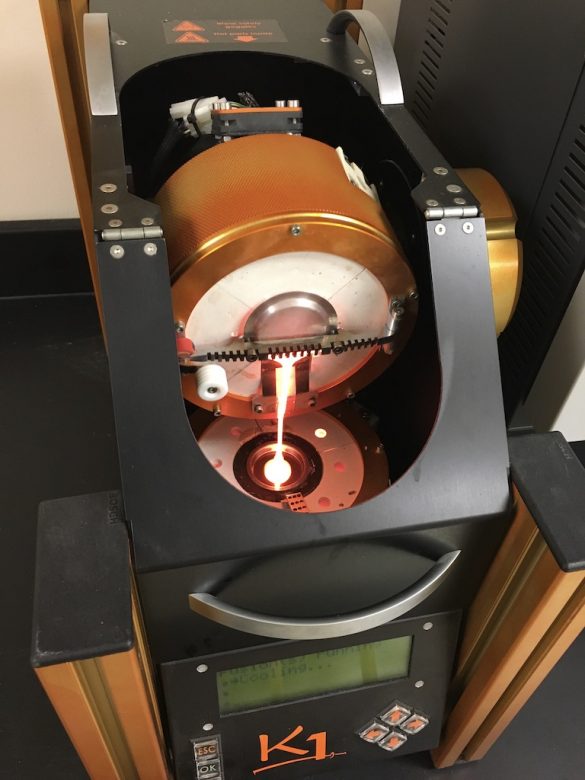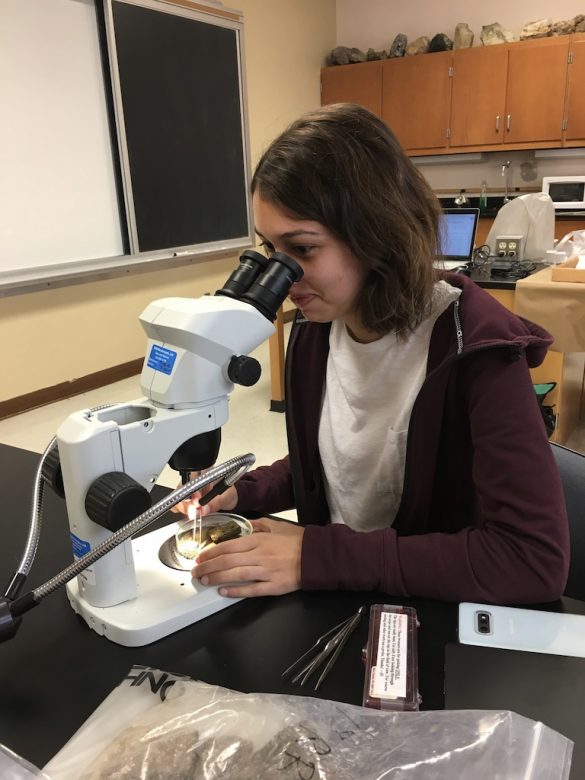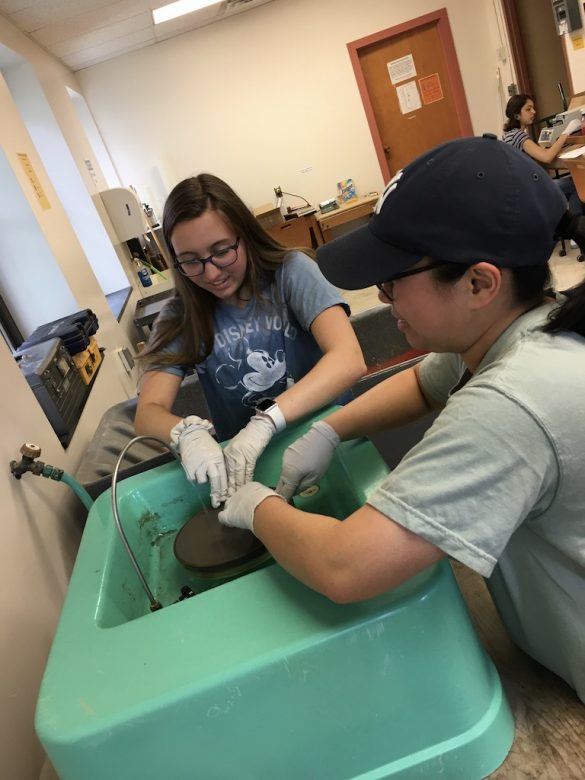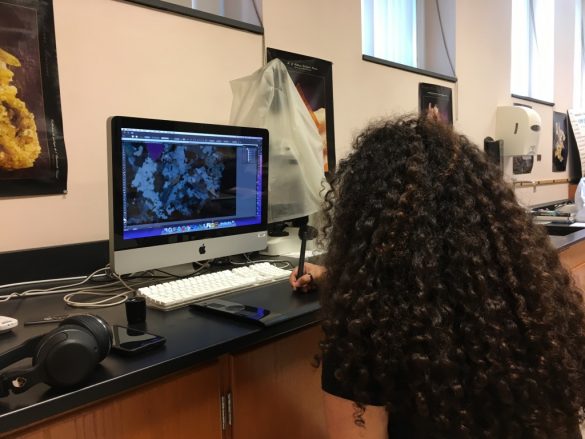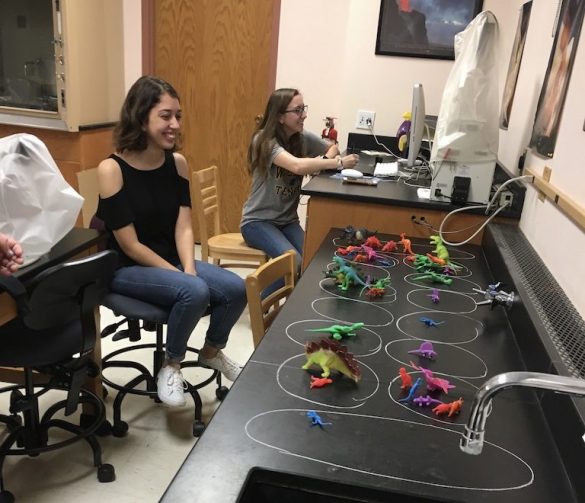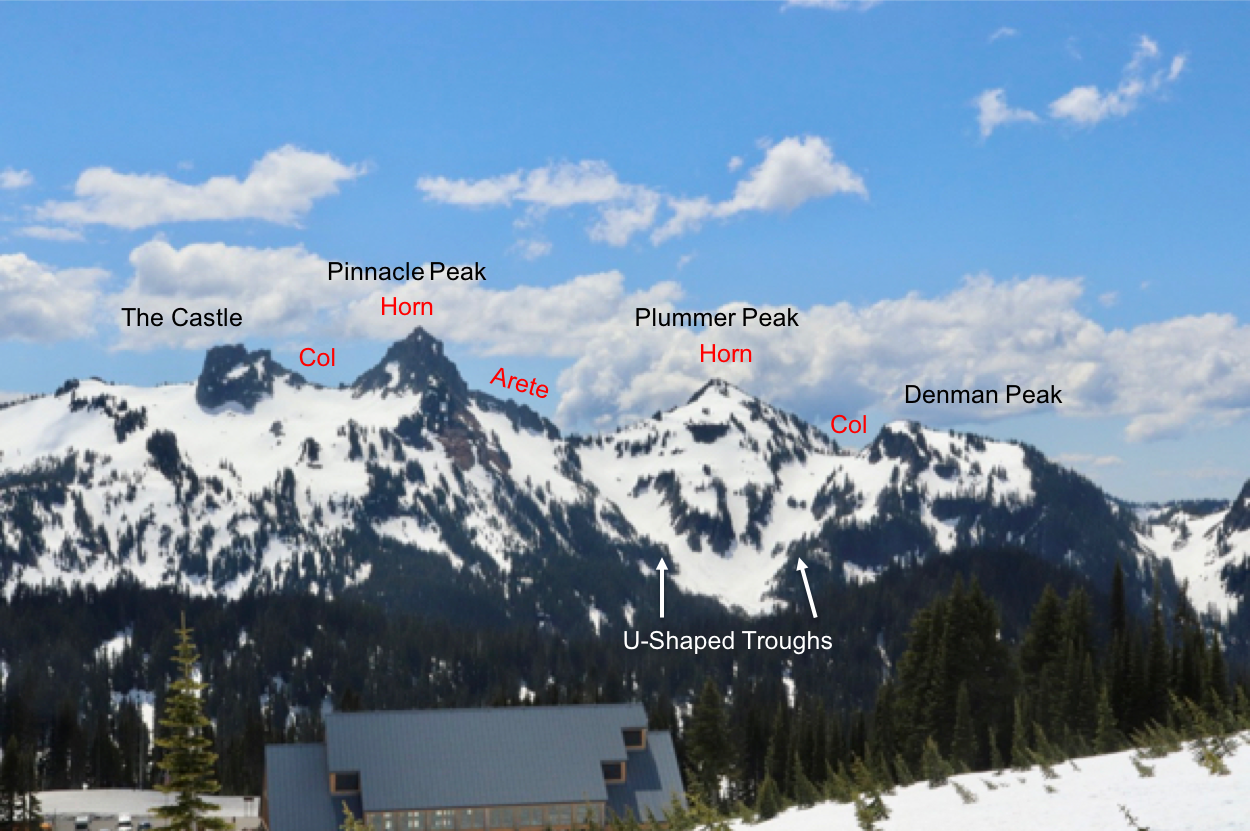 Bill Ausich (The Ohio State University), Oive Tinn (University of Tartu) have a paper that has just appeared:
Bill Ausich (The Ohio State University), Oive Tinn (University of Tartu) have a paper that has just appeared:
Ausich, W.I., Wilson, M.A. and Tinn, O. 2019. Kalana Lagerstätte crinoids: Early Silurian (Llandovery) of central Estonia. Journal of Paleontology doi.org/10.1017/jpa.2019.27
It was an absolutely delightful project that was thoroughly documented in this blog. Last summer Bill and I traveled to Tartu, Estonia, to work with Oive on describing the extraordinary crinoids of the Silurian Kalana Lagerstätte. A Lagerstätte is a sedimentary deposit with exceptional fossil preservation. It is a privilege as a paleontologist to work on one. As you can see from the images, the crinoids here are well preserved indeed. I’ll let the paper’s abstract tell the story:
Abstract.—The Kalana Lagerstätte of early Aeronian (Llandovery, Silurian) age in central Estonia preserves a diverse shallow marine biota dominated by non-calcified algae. This soft-tissue flora and decalcified and calcified crinoids are preserved in situ in a lens of microlaminated, dolomitized micrite interbedded in a sequence of dolomitized packstones and wackestones. Although the Lagerstätte is dominated by non-calcified algae, crinoids (together with brachiopods and gastropods) are among the most common organisms that were originally comprised of a carbonate skeleton. Two new crinoids are described from this unit, Kalanacrinus mastikae n. gen. n. sp. (large camerate) and Tartucrinus kalanaensis n. gen. n. sp. (small disparid). Interestingly, these two crinoids display contrasting preservation, with the more common large camerate preserved primarily as a decalcified organic residue, whereas the smaller disparid is preserved primarily in calcite. Preservation was assessed using elemental mapping of C, Ca, S, and Si. Columns have the highest portion of Ca, once living soft tissue is indicated by C, S was dispersed as pyrite or associated with organics, and Si is probably associated with clay minerals in the matrix. This new fauna increases our understanding of the crinoid radiation on Baltica following Late Ordovician extinctions.
 The top image and that above shows the new crinoid Kalanacrinus mastikae. Look at those gorgeous arms and the carbon films in the calyx that may represent internal organs. The species is named in recognition of Viirika Mastik, an Estonian graduate student who helped us in innumerable ways, and she was very patient with the sometimes clueless Americans! The genus, of course, is named for the deposit. (Scale bar is 5.0 mm.)
The top image and that above shows the new crinoid Kalanacrinus mastikae. Look at those gorgeous arms and the carbon films in the calyx that may represent internal organs. The species is named in recognition of Viirika Mastik, an Estonian graduate student who helped us in innumerable ways, and she was very patient with the sometimes clueless Americans! The genus, of course, is named for the deposit. (Scale bar is 5.0 mm.)
 Here is another specimen of Kalanacrinus mastikae. Note the small angular, twiggy fossil below the calyx. I think it may be a green alga similar to the modern Hydrodictyon but marine and with larger cells.
Here is another specimen of Kalanacrinus mastikae. Note the small angular, twiggy fossil below the calyx. I think it may be a green alga similar to the modern Hydrodictyon but marine and with larger cells.
 Say hello to the new crinoid Tartucrinus kalanaensis. It’s pretty obvious how we came up with these names. Note again a carbon film in the calyx that may be from internal organs, possibly the anal sac. (Scale bar is 5.0 mm.)
Say hello to the new crinoid Tartucrinus kalanaensis. It’s pretty obvious how we came up with these names. Note again a carbon film in the calyx that may be from internal organs, possibly the anal sac. (Scale bar is 5.0 mm.)
 The location and stratigraphy of the Kalana Quarry.
The location and stratigraphy of the Kalana Quarry.
 Several slabs of Kalana material. What a joy it was to study them for long, uninterrupted days.
Several slabs of Kalana material. What a joy it was to study them for long, uninterrupted days.
 The paleo lab at the University of Tartu, with Bill working in the background.
The paleo lab at the University of Tartu, with Bill working in the background.
 I loved this brand new Leica photomicroscope (model S9i).
I loved this brand new Leica photomicroscope (model S9i).
 Oive does excellent geochemistry, so she handled the elemental mapping. This example shows a close view of a Kalana crinoid column, with the elements C, Ca, S, and Si mapped. As stated in the abstract, columns have the highest portion of Ca, once living soft tissue is indicated by C, S was dispersed as pyrite or associated with organics, and Si is probably associated with clay minerals in the matrix.
Oive does excellent geochemistry, so she handled the elemental mapping. This example shows a close view of a Kalana crinoid column, with the elements C, Ca, S, and Si mapped. As stated in the abstract, columns have the highest portion of Ca, once living soft tissue is indicated by C, S was dispersed as pyrite or associated with organics, and Si is probably associated with clay minerals in the matrix.
Thank you to our excellent Estonian colleagues!
 From the left is Oive Tinn, Mare Isakar, Bill, and Viirika Mastik.
From the left is Oive Tinn, Mare Isakar, Bill, and Viirika Mastik.
 Mikulov, Czech Republic — We have been very fortunate with the weather on our long IBA field excursion. Dazzling sunlit days and relatively cool evenings. Above is our first stop of the day — the Sandberg site with Miocene fossils in a loosely-bound sand.
Mikulov, Czech Republic — We have been very fortunate with the weather on our long IBA field excursion. Dazzling sunlit days and relatively cool evenings. Above is our first stop of the day — the Sandberg site with Miocene fossils in a loosely-bound sand. This is a cool geological setting where a Miocene shoreline is preserved against Jurassic carbonate cliffs. The Miocene sand is the yellowish unit above superimposed on the blue limestones.
This is a cool geological setting where a Miocene shoreline is preserved against Jurassic carbonate cliffs. The Miocene sand is the yellowish unit above superimposed on the blue limestones. Some of the Jurassic carbonates are exposed as boulders that tumbled down the slopes. This boulder has a surface that was exposed to the Miocene ocean and accumulated round bivalve borings (ichnogenus Gastrochaenolites, which has been seen a lot in this blog).
Some of the Jurassic carbonates are exposed as boulders that tumbled down the slopes. This boulder has a surface that was exposed to the Miocene ocean and accumulated round bivalve borings (ichnogenus Gastrochaenolites, which has been seen a lot in this blog). The limestones also have external molds of snails and bivalves.
The limestones also have external molds of snails and bivalves. Another castle! This one very dramatic in its position commanding the confluence of the Morava and Danube rivers. It is the Devin Castle, which was destroyed by Napoleon himself in 1809.
Another castle! This one very dramatic in its position commanding the confluence of the Morava and Danube rivers. It is the Devin Castle, which was destroyed by Napoleon himself in 1809. This is the Maiden Tower, a cultural symbol of Slovakia.
This is the Maiden Tower, a cultural symbol of Slovakia. River confluences are so cool. The Morava on the right is joining the Danube.
River confluences are so cool. The Morava on the right is joining the Danube. At this important confluence, at the border between what was Czechoslovakia and Austria during the Cold War, is a moving memorial to the over 400 people shot while trying to escape through the Iron Curtain.
At this important confluence, at the border between what was Czechoslovakia and Austria during the Cold War, is a moving memorial to the over 400 people shot while trying to escape through the Iron Curtain. The long list of names of those killed by the Soviets and their allies along the border.
The long list of names of those killed by the Soviets and their allies along the border. The last stop of the day was the type section of the Hartl Formation (Middle Miocene, Badenian) near Eisenstadt, Austria. It is another loose sand, this time with common brachiopods and some bryozoans. This section is eroded back, forming a cave. The roof will collapse some day.
The last stop of the day was the type section of the Hartl Formation (Middle Miocene, Badenian) near Eisenstadt, Austria. It is another loose sand, this time with common brachiopods and some bryozoans. This section is eroded back, forming a cave. The roof will collapse some day. These are beach sands with spectacular cross-beds. I collected some sediment to challenge my sedimentology students next year.
These are beach sands with spectacular cross-beds. I collected some sediment to challenge my sedimentology students next year. Tonight we stay in the historic Czech city of Mikulov on the border with Austria.
Tonight we stay in the historic Czech city of Mikulov on the border with Austria.










































